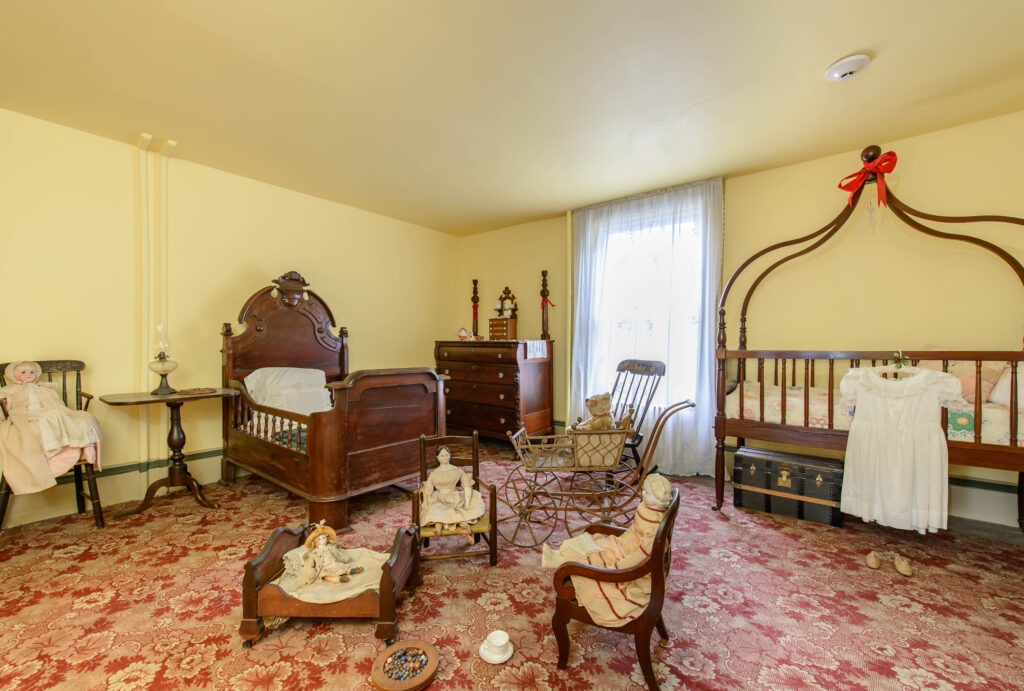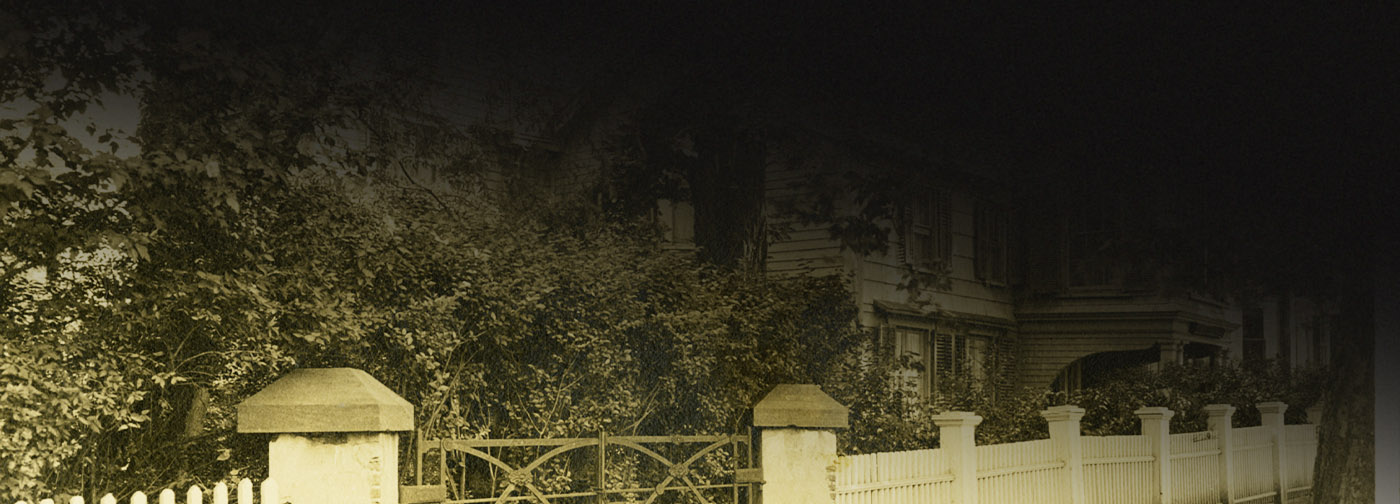1855
In 1851, Solomon Townsend II, a grandson of Samuel Townsend, purchased the family homestead from his deceased aunt Phebe’s husband, Dr. Ebenezer Seely. He then commissioned his nephew, the architect Edward H. Thorne, to remodel and enlarge the house, which was considered old-fashioned by the middle of the 19th century. Thorne created a fashionable Victorian “villa” in the Gothic Revival style. He added a wing with steeply pitched gables, a tower with a porte cochère for carriages to pull under, projecting bay windows and open “piazzas” or porches. The additions doubled the size of the house, resulting in a large, sprawling residence of twenty-two rooms. The porches, projecting bays, multiple gables and window openings of different shapes and sizes gave the villa a picturesque quality that appealed to romantic Victorian tastes.
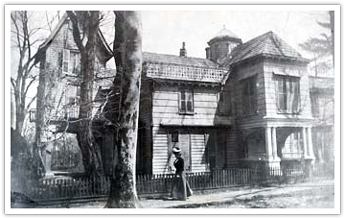
The extensive remodeling of the original Colonial house included French windows on the first floor, a deep front entrance porch with a projecting bay above, new siding of clapboards on the first floor and shingles on the second floor, and a balustrade at the edge of the roof. The central chimney of the circa 1738 house was removed and replaced by an octagonal lantern that provided illumination for an octagonal stained-glass skylight installed in the ceiling of the second-floor hall. From the first-floor hall, the skylight was visible through an elliptical opening with cast-iron railing that connected to the second level.
Gothic Revival details on the exterior of the house included steep gables, pointed-arch window openings and Tudor arches at the porte cochère. Inside, the style manifested itself in vaulted ceilings, doorways with Tudor arches, and fireplaces with pointed-arch openings. When Raynham Hall was remodeled in the 1850s, the Gothic Revival style was at the height of popularity, but Victorian tastes were eclectic and the Italianate style was becoming fashionable. Consequently, the house incorporated a number of Italianate features as well, including round-arch window openings, interior molded door surrounds with projecting shoulders, and marble mantelpieces with arched openings surmounted by a shield under the mantelshelf.
Around the time of the Civil War, a new kitchen wing was built onto the rear of the north wing of the house. It seems that the Townsend family made no other improvements or alterations after the addition of the new kitchen. The house remained essentially unchanged into the first half of the twentieth century, when it was owned by Julia Weeks Coles and her sister Sarah Townsend Coles from 1914 to 1941 and then by the Daughters of the American Revolution from 1941 to 1947.
19th Century Parlor
Family and friends spent evenings in this room, engaged in various leisurely pursuits such as reading, playing games, doing needlework and playing music. The parlor was also used to receive visitors and to entertain guests on special occasions. The walnut parlor suite, c.1850-1860, is in the Rococo Revival style, which was at the height of fashion in the mid-19th century. The sewing table, center table and piano forte are excellent examples of Empire-style furniture, c.1825-1840. A portrait of Helene DeKay Townsend, mistress of the house, adorns one of the walls.
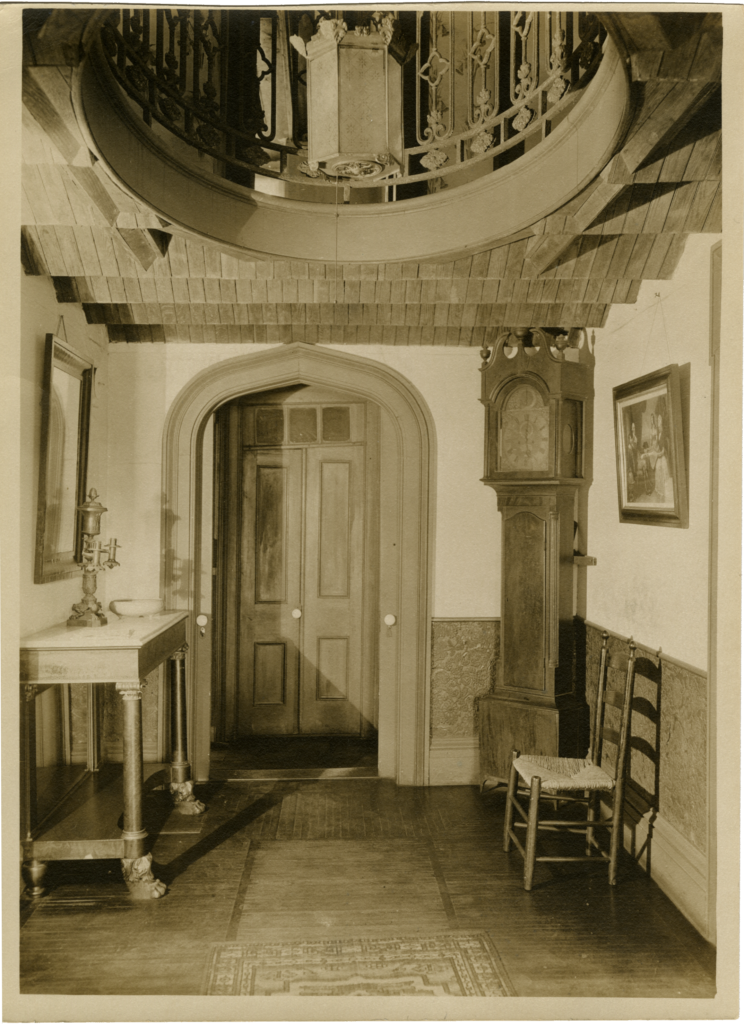
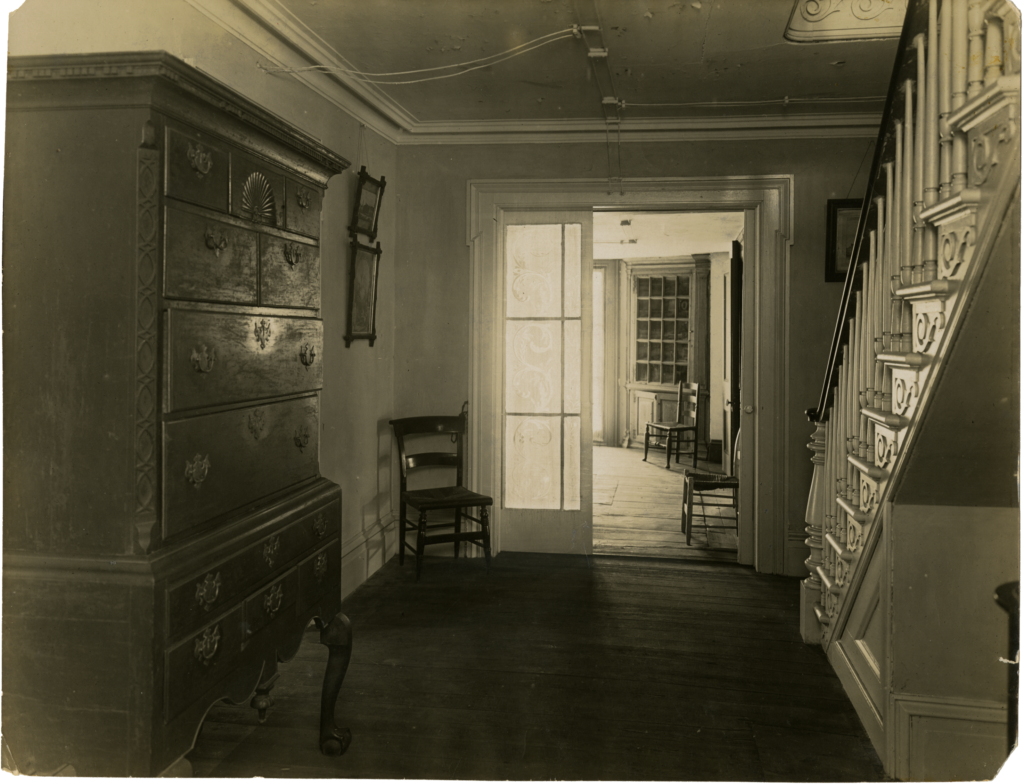
Victorian Dining Room
This impressive room was used for many formal dinner parties. The room features a unique vaulted ceiling, an element of Gothic Revival design. The bay window on the west side provided access to the garden through two doors and was no doubt arranged with plants, forming a small conservatory. Growing plants indoors was a developing interest during the 19th century. Arranged in the bay window is a miniature greenhouse, named a “Wardian” case after its inventor, Nathaniel Ward. Above the pier table alongside the dining table is a portrait by artist Ezra Ames of Solomon Townsend I.
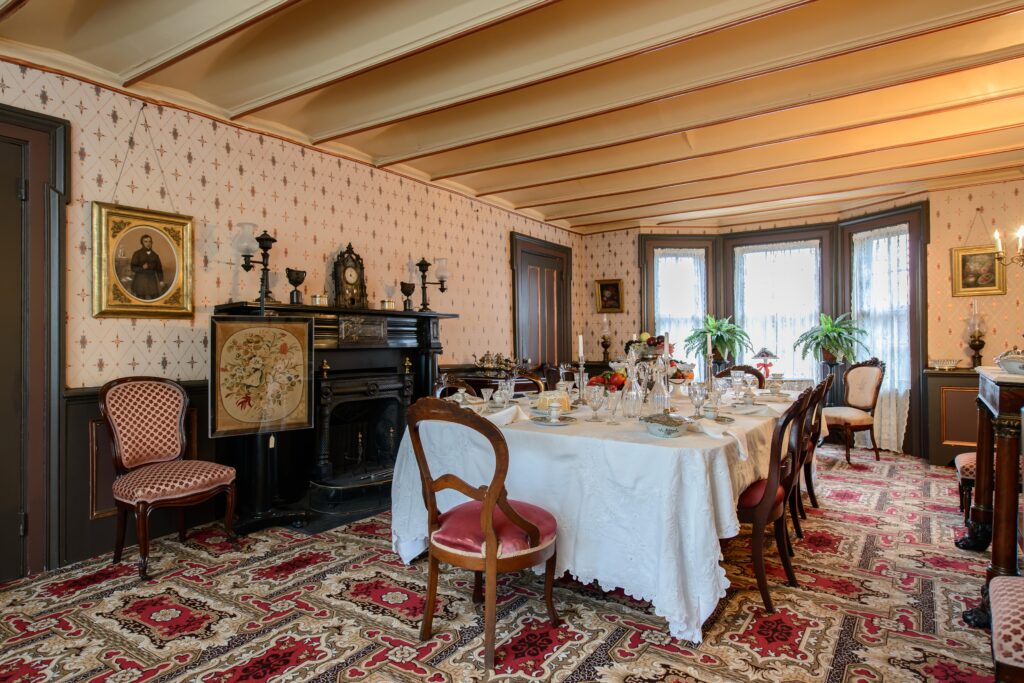
Victorian Nursery
Solomon and Helene had five boys and one girl. This may have been the bedroom of their only daughter, Maria. Today it is represented as a nursery, where the nursemaid cared for the small children in the family. Arranged throughout the room are many period games, toys and dolls.
